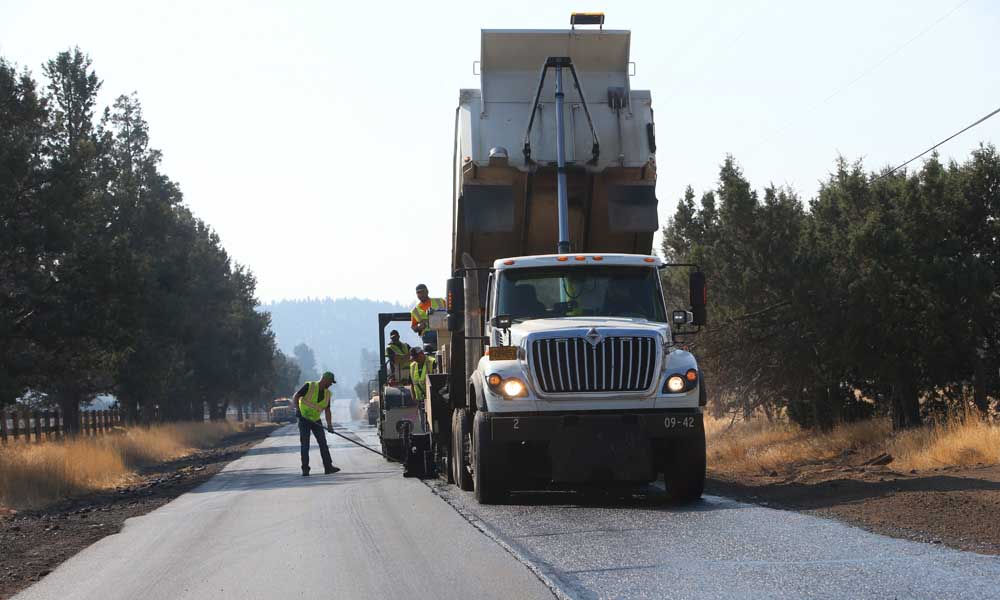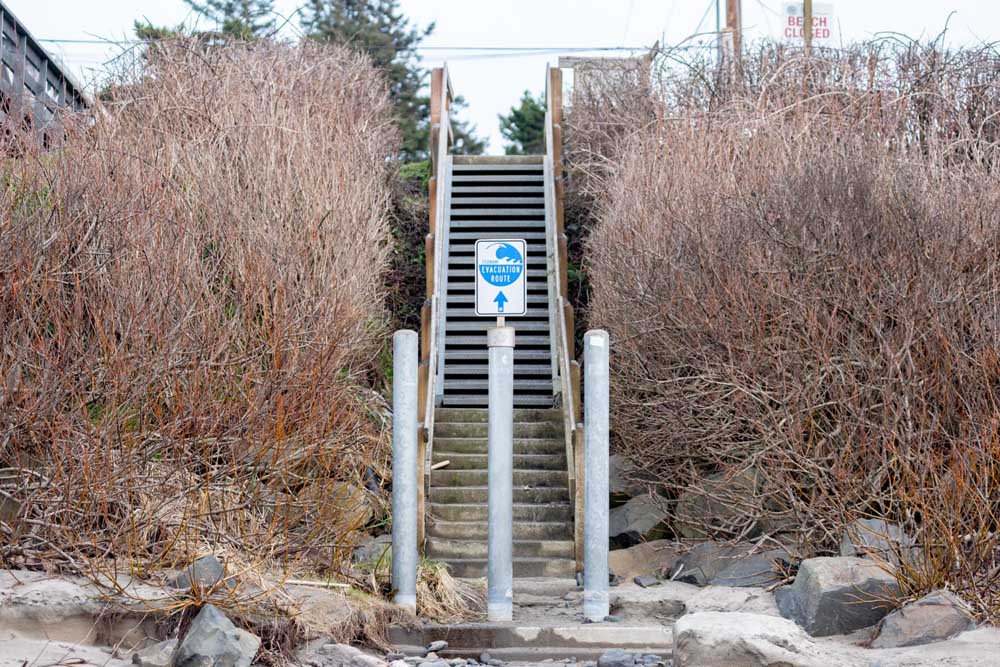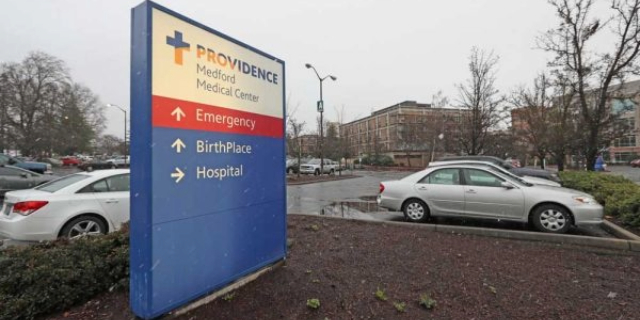Oregon counties strapped for road cash, but Deschutes faring OK
Published 5:45 am Wednesday, October 9, 2024

- Deschutes County road crews performing asphalt paving work on George Cyrus Road in Sisters Tuesday morning.
With renewed funding for transportation at the forefront of the state’s 2025 legislative session, counties in Oregon recently signaled the bleak status of rural roads and bridges, promising a decline in upkeep and braking on new projects without a funding fix.
A report from the Association of Oregon Counties presented to state lawmakers last month detailed an $834 million annual shortfall for roads among 36 counties statewide, infusing pressure already created by the Oregon Department of Transportation’s own gigantic budget hole.
Trending
The situation is not so dire in Deschutes County, according to road department director Chris Doty. Without legislative action, however, the county won’t be able to deliver on key capital projects to accommodate stampeding growth.
“Certainly other counties are in a lot worse shape than us,” Doty said. “But it’s just the nature of transportation funding — when opportunities present themselves, it’s time to ring the bell.”
Read more
Transportation challenges mirror those from two decades ago
Trending
County roads make up half of the road miles in Oregon, excluding federal roads, according to the report. Half of all county roads in the state lie east of the Cascade mountains, where only one-seventh of its population lives, a determining factor in transportation funding.
Counties, cities and the state all draw from the same stream of revenue, the State Highway Fund. Counties get 30%, cities 20% and the state 50% — a ratio set in state law.
State law restricts counties from spending general property tax revenue on transportation, meaning counties are “tied at the hip,” to the highway fund, Doty said.
The report comes about one month after the Oregon Department of Transportation painted a similarly dire picture with its budget request for the next few years. The agency detailed a $354 million revenue shortfall for maintenance and operations, which would require cutting about 1,000 staff statewide including about 100 in the Central Oregon region, along with reductions in snow plowing and road cleanup on state highways.
Lawmakers on the Joint Transportation Committee heard about transportation needs in Central Oregon from state and local officials during a visit to Bend last month.
Gas tax less reliable
Oregon enacted the nation’s first gas tax in 1919 to fund transportation. The century-old tax, now at 40 cents per gallon, has been diminished by fuel-efficient cars and outpaced by inflation, which has pushed up construction and maintenance costs, Doty said.
“We’re always fighting a losing battle against that,” he said.
Oregon’s last major transportation package in 2017 had a total expected investment of $5.3 million, driven by a bump in the gas tax of a few cents every other year. Deschutes County Commissioner Phil Chang, who was recently appointed to the state board that oversees the Oregon Department of Transportation, said some of the projects promised in that package still aren’t built.
He said it will take something other than another bump in the faltering gas tax to ease funding woes.
“The state funding formula for transportation is inadequate,” Chang said. “We need to come up with a new funding formula that really captures the usage and the wear and tear that the vehicles that are on the road are putting on the road.”
Chang said he has also pushed Congress to maintain road funding tied to federal forest lands, which brings in a few million dollars each year. For more than 100 years the U.S. Forest Service shared logging revenues with counties. Payment programs that followed after logging dropped off in the late 1980s and early 90s have declined since then, according to the counties’ report. According to Chang, some of those federal funds have already expired and the future of others is uncertain.
Smooth rides in Deschutes CountyThough transportation funding might be a losing battle, Deschutes County is faring relatively well. Its current revenue shortfall is $15 million — all of which is for new construction projects and not maintenance, Doty said.
Of the 920 miles of roads Deschutes County maintains, 96% are in good condition, according to the county. The county’s pavement condition index, which scores surface quality, lies at an optimal 84 out of 100, according to a 2024 report. By comparison, the city of Bend has a score of 76 and needs $82 million investment over the next five years to reach the same score as the county, according to David Abbas, transportation and mobility director with the city.
Read more
Bend transportation plan looks to accommodate 40,000 more people
Meanwhile Jefferson County, which has two-thirds the number of road miles and about one-eighth of the population, has a longer list of needs. The county has a $16 million deficit to repair failed roads that became decrepit from deferred maintenance, according to public works director Matt Powlison. Across the state, thin maintenance budgets have led roads to deteriorate to a point beyond repair, requiring a more expensive rebuild.
Jefferson County also has four structurally deficient bridges needing $13.2 million in repairs or replacements. Some have become restricted, barring heavy loads, Powlison said. It’s a common theme across the state, where 61% of county-owned bridges are in “fair” condition and 7% are in “poor” condition, according to the report.
Keeping up with growth is the primary concern in Deschutes County. The county is slated to build several roundabouts and interchanges near Sunriver and Deschutes River Woods to improve safety and connect the system.
But if push comes to shove, the road department’s philosophy is to prioritize maintenance over new construction — meaning without a funding fix, some planned capital projects would get cut out, Doty said.
The county plans to spend $69 million on pavement preservation, bridge repairs and traffic safety improvements in the next five years.








